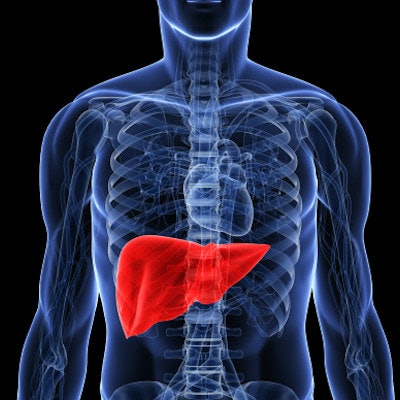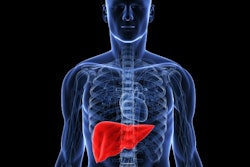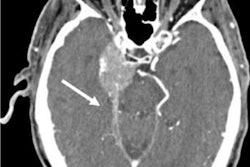
Noncontrast photon-counting CT (PCCT) performs just as well as MRI when it comes to assessing hepatic steatosis, according to a study published February 8 in the European Journal of Radiology.
The findings could offer additional and valuable clinical data from the many CT exams that are performed each day in a busy radiology department -- especially in obese patients who are at risk of diseases caused by this abnormal accumulation of liver fat, lead author Dr. Fides Schwartz of Duke University in Durham, NC, told AuntMinnie.com.
"Photon-counting CT provides precise liver fat quantification," she said. "This could improve patient care/outcomes by finding fatty liver disease in earlier stages and providing the opportunity to start treatment early."
The incidence of hepatic steatosis is increasing, and the condition has been linked to many health complications, including liver fibrosis and cirrhosis, metabolic syndrome, diabetes, and coronary artery disease. It is typically diagnosed by liver biopsy, an invasive procedure that doesn't easily lend itself to repetition in order to monitor the progression of the disease or a patient's response to treatment. MRI can be used to evaluate hepatic steatosis, but it requires special imaging sequences -- which lengthen exam time, may not be as accessible as other imaging modalities, and can prove challenging for larger patients or those with claustrophobia.
That's where CT -- particularly PCCT -- could help. Studies have shown that single-energy CT correlates well to MRI and MR spectroscopy for assessing hepatic steatosis, but fat quantification is based on Hounsfield units, which are dependent on the CT scanner, patient size, and the presence or absence of iodine-based contrast. PCCT, on the other hand, measures the energy of photons in the x-ray beam in a different way than does conventional CT and shows promise for quantifying fat more accurately.
"[PCCT] uses energy-resolving detectors that can discriminate the energy of all photons in the x-ray beam," Schwartz and colleagues explained. "This can be used to identify and quantify multiple materials within the human body, including fat and iodine, so this technology is well-suited for precise measurement in screening and monitoring of hepatic steatosis on every CT scan, though the fat quantification algorithm provided by the vendor is still in the FDA-approval process and currently only available as a research application."
The team conducted a two-part study to compare the performance of the two modalities, imaging both a phantom and 12 obese patients. The phantom consisted of inserts with six concentrations of oil (0%, 10%, 20%, 30%, 50%, and 100%) and six oil-iodine mixtures (0%, 10%, 20%, 30%, and 50% fat and 3 mg/mL of iodine); it was imaged with a PCCT device and a 1.5-tesla MRI system. The patient part of the study included 12 obese adult individuals with known fatty liver disease, all of whom underwent both a PCCT and an MRI exam.
The group found no significant differences between the fat fractions (p = 0.32) or iodine (p = 0.6) on PCCT imaging or MRI. The same proved true for the patients, with a 13.1 mean fat signal fraction on MRI and a 12 mean fat signal fraction on PCCT (p = 0.138).
The findings were a bit surprising, especially regarding lower liver fat fractions, Schwartz told AuntMinnie.com.
"We had not expected such a close correlation with MRI for low liver fat fractions," she said. "That is traditionally the area where CT imaging has struggled, and we hope that the improved quantification capabilities will bring photon-counting CT to the same level of precision as MRI for this task."
How might these findings translate to better patient care -- and outcomes? PCCT's comparable performance to MRI for assessing liver stenosis could make way for better screening for hepatic steatosis, according to Schwartz.
"Many patients get CT imaging for emergency reasons, such as possible appendicitis," she said. "In an opportunistic screening scenario, a patient that gets this imaging for appendicitis and is also found to have fatty liver disease would not need further imaging with MRI to quantify the exact liver fat fraction, but this information could be provided to the gastroenterologist or general practitioner directly from the CT so they could plan their treatment."




















